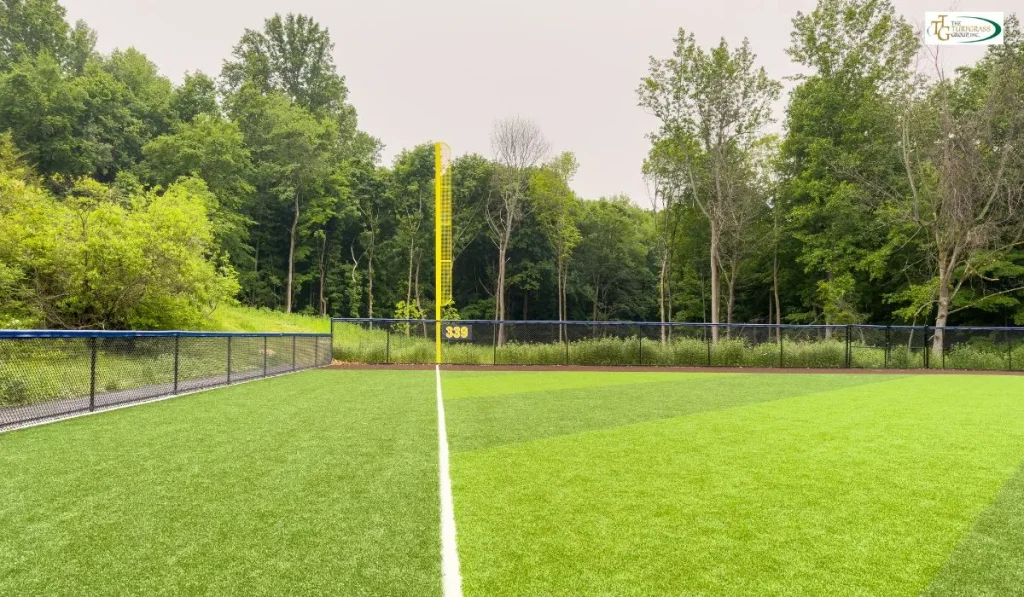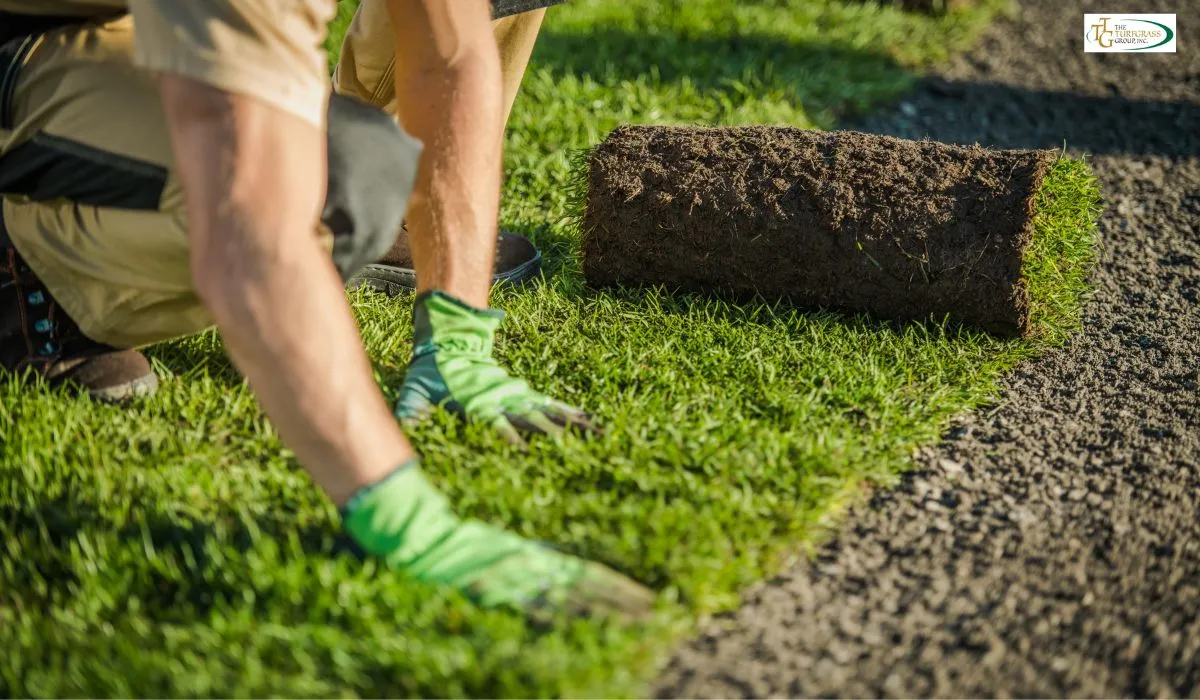
For a bright, long-lasting, pure turfgrass, quality control is what Smart Drop endorses.
This certification can only guarantee the finest variants of turfgrass since they must meet standards by Crop Improvement Associations.
What this does is offer protection to both consumers and producers.
It gives them confidence and reliance on TifTuf Bermudagrass Smart Drop products, making it a highly branded name in the turfgrass production industry.
Turfgrass Certification Overview
Certification is the backbone of quality assurance in turfgrass production.
Every state has its crop improvement association or similar regulatory agency that maintains standards, procedures, and labelling for certified turfgrass.
The objective of certification is two-fold: maintain genetic integrity and guarantee that the turfgrass has its genetic purity and uniformity across generations.
Consumer Protection
Provide an independent, third-party quality assurance program that guarantees the authenticity and quality of the product.
The certification process consists of regular inspections, rigorous testing, and adherence to strict protocols.
Certified turfgrass is inspected several times during the growing season.
It must pass standards involving variety identification, freedom from undesirable plants, and the absence of off-types or contaminants.
Only such turfgrass is allowed to carry the certified label that signifies industry-best practices.
What is the Smart Drop Turfgrass Certification Process?

Innovative Drop certification is the most comprehensive program to ensure the highest levels of turfgrass production.
1. Field Inspections
Field inspections are an integral aspect of the Smart Drop certification process.
Crop Improvement Association inspectors conduct these inspections during the growing season at least three times.
The overall objectives of these inspections include:
- Verification of the genetic purity of the turfgrass variety.
- Identification and removal of weeds.
- Verification that there are no off-types or contaminants in the field.
2. Source Material Verification
Prior to planting, all fields are verified to be weed-free from contaminating weeds or other turfgrass varieties.
Planting material should come from verified foundation production plots set up by private breeders or universities.
This traceability ensures that the turfgrass retains its genetic integrity from the source to the consumer.
3. Strict Rules and Regulations
State crop improvement associations, along with The Turfgrass Group, lay down strict rules and regulations that the certified turfgrass producers need to follow.
The rules start from planting to growing and then to harvesting and labelling.
4. Certified Labelling
Only sod and sprigs harvested from fields that meet inspection standards will be allowed to carry the certified label.
These products are shipped with a blue-certified turfgrass label, leaving no doubt that they come from the best of the breed.
Testing Involved in Achieving Smart Drop Certification for Turfgrass
The process of achieving Smart Drop certification for turfgrass involves rigorous testing at various stages to ensure the highest standards of quality, genetic purity, and environmental adaptability.
Each stage of testing is critical in maintaining the integrity and reliability of certified turfgrass.
Below are the key testing phases involved:
-
Varietal Identification Testing
This testing stage guarantees that the turfgrass cultivated is of the desired genetic variety.
- Genetic analysis or phenotypic testing is done to confirm the genetic purity of the turfgrass.
- Guarantees that the product conforms to its stated attributes, such as color, texture, and growth habits.
-
Purity Testing
Purity testing seeks to remove off-types, impurities, or unwanted plants in the turfgrass.
- Field samples are extracted and tested for the occurrence of non-target plant species.
- Intensive field investigations are carried out during the growing season to detect weeds or other impurities that would interfere with the turfgrass.
-
Weed-Free Assurance Testing
Soil and planting materials are tested very strictly before planting to check the presence of weeds.
- Residual weed seeds present in the soil do not germinate during the cycle of turfgrass growth.
- The planting material is traced back to foundation production plots that are confirmed to be free of any contaminating species.
-
Growth and Health Monitoring
Turfgrass is tested for general health and growth uniformity throughout the growing season.
- Inspections focus on the identification of diseases, pests, and environmental stress factors that may affect the turfgrass.
- Stress tolerance tests are conducted to ensure the turfgrass can adapt to specific environmental conditions.
-
Moisture and Soil Nutrient Testing
Testing the soil’s moisture levels and nutrient composition is essential for the growth and sustainability of turfgrass.
- Soil samples are taken at regular intervals and tested to ensure that the growing conditions are ideal.
- This testing reduces the application of excessive fertilizers or irrigation, which contributes to environmental sustainability.
-
Contaminant-Free Testing
Turfgrass certified for quality is tested to ascertain that it is free from physical contaminants, including:
- Soil fragments, stones, or debris.
- Non-organic materials that may affect the quality of the product and its usability.
The Ins and Outs of Certification
Certification is not only an inspection and a label but rather a holistic approach to quality assurance.
Comprehensive Oversight
The process begins from the initial field inspection and continues right through to the final product labelling.
Every step of the way is monitored and documented, ensuring that no detail goes unturned and every batch of turfgrass meets the stringent quality criteria.
Producer Accountability
The producers under the Smart Drop certification program are held to a high degree of accountability.
They document every stage of production, from planting material to field inspection and harvesting procedures.
The level of transparency is sure to build trust and confidence in the certification process.
Third-Party Assurance
This would then stand alone as the only third-party assurance program in the entire turfgrass industry.
In its own right, the independence of Crop Improvement Association Certification matters to ensure consumer confidence and trust.
Why Go with Smart Drop Certified Turfgrass?
Quality Assured
Consumers can be ensured to buy turfgrass products that meet top-class standards of genetic purity as well as environmental adaptability.
Consumer Protection
The strict process of certification ensures that the product is free from contaminants and off-types, giving a sense of security to consumers.
Value Addition
Producers will benefit from the increased credibility and marketability coming with Smart Drop certification to differentiate themselves within a competitive market.
Environmental Sustainability
Apart from these characteristics and genetic purity, innovative drop certification emphasizes environmental responsibility.
Certified turfgrass cultivars are bred and are intended to thrive in specific environments with reduced use of supplementary waters, fertilizers, and pesticides.
This aids not only the environment but reduces the cost of its upkeep for the consumer.
Trust and Transparency
Transparency at every stage of the certification process makes Smart Drop trustworthy for consumers.
By offering detailed information on the origin of the product, the way it was produced, and its certification status, Smart Drop allows the buyer to make an informed decision.
Conclusion
The Smart Drop certification embodies the commitment towards quality, reliability, and sustainability in turfgrass production.
This rigorous certification is beyond the standard and ensures that every single turfgrass variety carrying the Smart Drop label is a product of extreme care with complete oversight.
For the consumers, it means access to turfgrass that is genetically pure, environmentally sustainable, and suited for specific conditions under which it will thrive.
For producers, Smart Drop certification opens up new opportunities.
It is strengthened by the credibility and assurance that this program provides.
It speaks of a commitment to not only maintaining but exceeding industry standards.
The meticulous field inspections, strict protocols, and third-party validation create a comprehensive framework of accountability that benefits everyone involved.
As the need for high-quality turfgrass continues to increase, it provides a benchmark for Smart Drop certification.
It ensures that every product labelled and certified is not only aesthetically pleasing but also durable, sustainable, and free of any contaminants.
This level of confidence and assurance ensures that consumers get lasting benefits from their investment in the quality of turfgrass.
FAQ’s
What is Smart Drop Certification?
Innovative Drop Certification is a strict quality assurance program meant to ensure the genetic purity, environmental sustainability, and the quality of turfgrass varieties.
It involves several inspections in the field, strictly following the production guidelines, and third-party validation through Crop Improvement Associations.
Why is genetic integrity important for turfgrass?
The genetic integrity guarantees that turfgrass continues with specific features like colour, texture, and adaptation.
This ensures uniformity over generations when applied to any kind of use—residential lawns, sports fields, or even commercial landscapes.
What is the advantage of Smart Drop certification to the consumers?
Consumers benefit from Smart Drop certification by having guaranteed quality and peace of mind.
Contaminants and off-types are absent in certified turfgrass, meaning that buyers receive a product that is at the highest industry standards.
Accredited turfgrass is often bred for specific climates, which reduces maintenance costs and environmental impact.
What is the role of Crop Improvement Associations in the certification process?
Crop Improvement Associations establish the standards and procedures for certified turfgrass.
They ensure proper and regular inspections in their production fields, ensure correct source material, and monitor the adherence of producers to guidelines adopted in the stringent criteria under the certification process.
How does Smart Drop certification help in environmental sustainability?
The Smart Drop certification highlights that turfgrass varieties must perform well in specific climates and conditions, thereby requiring minimum quantities of excessive water, fertilizers, and pesticides.
This not only helps decrease environmental impact but also diminishes the maintenance cost incurred by consumers.
Why should producers opt for Smart Drop certification?
For producers, Smart Drop certification provides a competitive edge in the market.
The certification enhances the credibility and marketability of their turfgrass varieties, attracting consumers who prioritize quality and sustainability.
It also demonstrates a commitment to industry standards and accountability, fostering trust with buyers and industry partners.